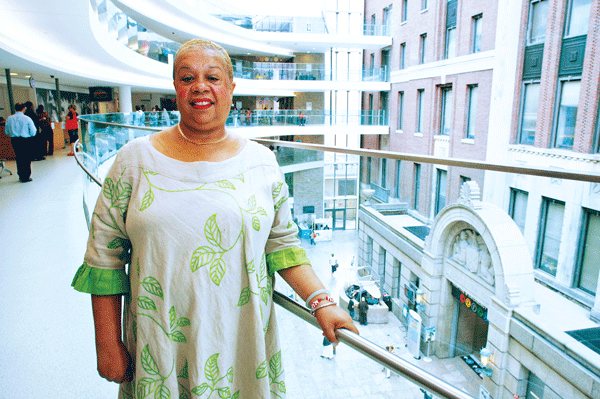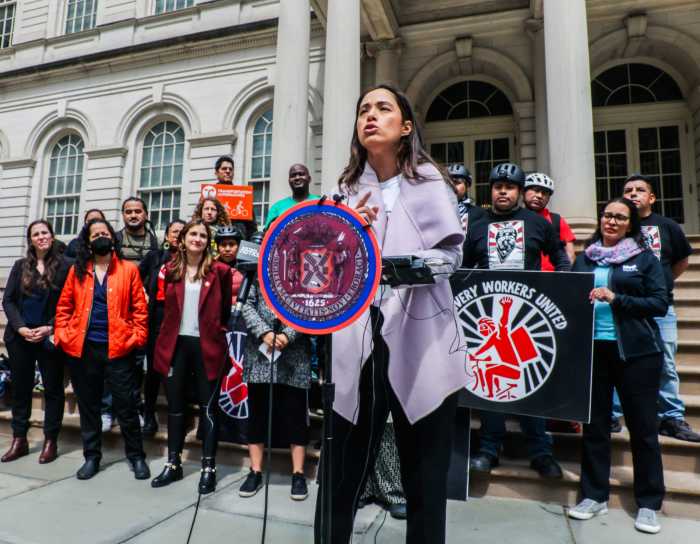
BY SAM SPOKONY | As the terrorists struck on Sept. 11, 2001, Dr. Nomi Levy-Carrick was starting school at Weill Cornell Medical College on the Upper East Side. She still recalls the feeling of helplessness that set in as the shock and horror of that day unfolded.
“The afternoon of 9/11, I went with a couple of classmates to emergency rooms around the city, trying to volunteer, but there was just nobody coming in,” said Levy-Carrick. “Now, I’m left with a very stark memory of that experience. We were all wondering where the patients were, and we slowly realized that, because of the destruction, there wouldn’t be any.”
Nearly ten years later, she found her patients — and in doing so, Levy-Carrick has become a leader in helping to treat those affected by exposure to ground zero toxins.
Last September, the doctor began her current job as the mental health director of the World Trade Center Environmental Health Center, which has provided free treatment to approximately 6,500 Downtown residents, workers, students and others who developed illnesses stemming from 9/11. The past year has been especially busy for the center, which is run by the city’s Health and Hospitals Corporation (H.H.C.).
Along with the fact that it offers treatment programs at three locations — Bellevue Hospital in Kips Bay, Manhattan, Elmhurst Hospital in Queens and Gouverneur Healthcare Services in Lower Manhattan — the center has grown in three major ways since its inception in 2005.
The most apparent growth is demonstrated by the mere number of patients, which have increased steadily each year. More than 600 new patients have entered the program since last September, according to Levy-Carrick.
Another change has been in the center’s source of funding. Originally, in order to provide treatment at no cost, a grant-based program was used to take in money from both city and federal donors. But since July 2011 — in a program that will continue through the next five years — the center is now bolstered by approximately $10 million dollars per year in federal funds through the James L. Zadroga 9/11 Health and Compensation Act. Levy-Carrick stressed that the change in funding has not, and will not, change the amount or types of treatment offered.
“We’re providing the same services, but it’s just being done under a different framework,” she said, adding that, as of last summer, the center must also provide the federal government with certification that its patients’ illnesses are tied to 9/11 exposure.
And as the center continues to grow and understand the needs of its patients, there has also been a change in perspective: It has shifted from acute treatment to chronic illness management — in Levy-Carrick’s words, from a short-term focus to a long-term focus.
“It’s an attempt to help people understand what we’re doing and the kind of treatment that we’re offering,” she said. “I think some people feel that, 11 years after the attacks, they shouldn’t still be having physical or mental symptoms, or they’re not clear why the issues would last this long.”
By changing the focus, the doctor continued, “we can make people a little more comfortable about coming forward to get treatment.”
For Donna Faria, a Brooklyn resident who was working at 33 Beaver St. on 9/11, that decision to become a patient has made a world of difference.
Faria, 59, was one of thousands of people who fled across the Brooklyn Bridge the day of the attacks and was engulfed in the thick dust and small shards of metal that billowed out from the collapsing towers. About three months after that, she began to have trouble breathing — and she knew something was wrong when visits to her primary care physician were to no avail.
Nearly three years ago, Faria took the next step and sought treatment through the center at its Bellevue Hospital location. She now receives bi-weekly injections and prescription drugs to help relieve her asthma and chronic sinus congestion — without having to worry about the cost.
“I feel better,” said Faria. “I’m so grateful for it, because good health means a better quality of life.”
Just a few days ago, her improved health allowed Faria to enjoy the experience of another life — that of her new granddaughter, who came in the arms of her daughter who was visiting from North Carolina.
“Normally I wouldn’t have been able to go and meet with my daughter because of my illness, but this time I was able to do it, and to see the baby,” she said, smiling. “I’m really hyped up right now.”





































